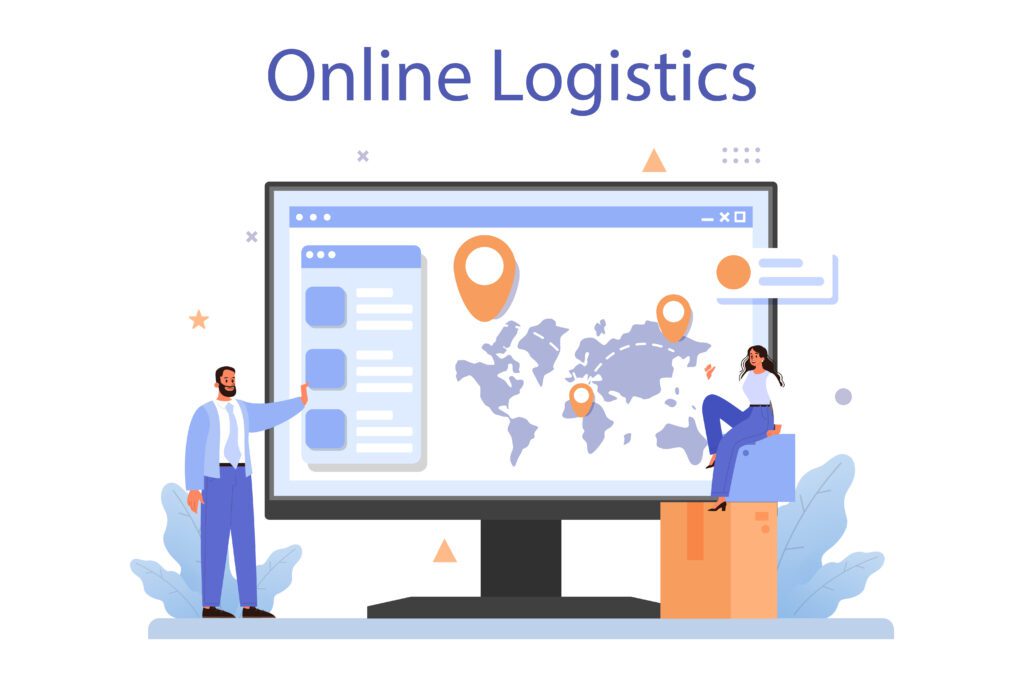Supply Chain Management (SCM) is the process of managing the flow of goods, services, information, and finances from suppliers to customers. It involves coordinating and integrating these activities across multiple companies in the supply chain to ensure that products and services are delivered to customers in a timely and cost-effective manner. A well-designed SCM system can significantly improve the efficiency and profitability of businesses. In this blog, we will discuss the uses, examples, advantages, features, and costing of an SCM system, as well as how Sieg Partners can help develop a robust SCM solution.
Global supply chain management market size was valued at $14.81 billion in 2020 and is projected to reach $37.41 billion by 2028, growing at a CAGR of 11.2% from 2021 to 2028. (Source: Allied Market Research)
An SCM system can be used to:
- Track inventory levels and monitor product demand to ensure that products are in stock when customers want to buy them.
- Optimize the transportation of goods, minimizing the time and cost of transportation while maintaining product quality.
- Manage supplier relationships and ensure that suppliers are meeting quality and delivery requirements.
- Identify areas for cost savings, such as reducing transportation costs, improving inventory management, and minimizing waste.

There are many different SCM systems, each tailored to the specific needs of a particular industry or company. Some examples include:
- Retail supply chain management system: This system is designed to manage the flow of goods from manufacturers to retailers. It involves coordinating the production, transportation, and delivery of products to retail stores.
- Manufacturing supply chain management system: This system is designed to manage the flow of goods from suppliers to manufacturers. It involves coordinating the procurement of raw materials, production scheduling, and inventory management.
- Healthcare supply chain management system: This system is designed to manage the flow of medical supplies and equipment from manufacturers to healthcare providers. It involves coordinating the procurement, storage, and distribution of these products.
An SCM system can provide many advantages to businesses, including:
- Increased efficiency: An SCM system can help businesses optimize their supply chain processes, reducing costs and increasing efficiency.
- Improved customer satisfaction: By ensuring that products are delivered on time and in good condition, an SCM system can improve customer satisfaction and loyalty.
- Greater visibility: An SCM system can provide businesses with greater visibility into their supply chain processes, allowing them to identify areas for improvement and make data-driven decisions.
- Better supplier relationships: An SCM system can help businesses manage their relationships with suppliers, ensuring that suppliers are meeting quality and delivery requirements.

Developing an SCM platform involves several steps, including:
- Analyzing business requirements: The first step in developing an SCM platform is to analyze the business requirements and identify the key features and functions that the platform should provide.
- Designing the architecture: Once the requirements have been identified, the next step is to design the architecture of the platform, including the database structure and user interface.
- Building the platform: The platform can then be built using a variety of programming languages and development frameworks.
- Testing and deployment: Once the platform has been built, it should be thoroughly tested to ensure that it is functioning properly. Once testing is complete, the platform can be deployed to production servers.
The adoption of blockchain technology in supply chain management is growing rapidly, with the global blockchain in supply chain market size expected to reach $3,485.25 million by 2027, growing at a CAGR of 52.6% from 2020 to 2027. (Source: ResearchAndMarkets)
An SCM system should provide the following features:
- Inventory management: The system should be able to track inventory levels and manage the movement of goods through the supply chain.
- Order management: The system should be able to manage orders, from the point of sale to the delivery of goods to the customer.
- Supplier management: The system should be able to manage supplier relationships, including procurement, delivery, and payment.
- Transportation management: The system should be able to optimize transportation routes and schedules, minimizing the time and cost of transportation.
The cost of developing an SCM system can vary depending on the size and complexity of the platform. Factors that can impact the cost include the number of features, the development time, and the technology used. It is important to work with a development team that can provide an accurate estimate of the cost and timeline for the project. In general supply chain management software can start from a range of $20000 USD.
In 2021, the global market for warehouse management systems (WMS) is expected to reach $4.4 billion, with a CAGR of 15.8% from 2021 to 2028. (Source: MarketsandMarkets)
Sieg Partners is a software development company that specializes in building custom software solutions for businesses. With extensive experience in developing SCM systems, Sieg Partners can help businesses develop a robust SCM solution that meets their unique needs.
Sieg Partners can provide the following services:
- Business analysis: Sieg Partners can work with businesses to identify their requirements and develop a detailed project plan.
- Development: Sieg Partners can build the SCM system using the latest technology and development frameworks.
- Testing: Sieg Partners can thoroughly test the system to ensure that it is functioning properly and meets all requirements.
- Deployment and maintenance: Sieg Partners can deploy the SCM system to production servers and provide ongoing maintenance and support.
To learn more about how Sieg Partners can help your business develop a robust SCM solution, please contact us at:
Email: biz@siegpartners.com
Phone: +91 83207 04030
Website: www.siegpartners.com









